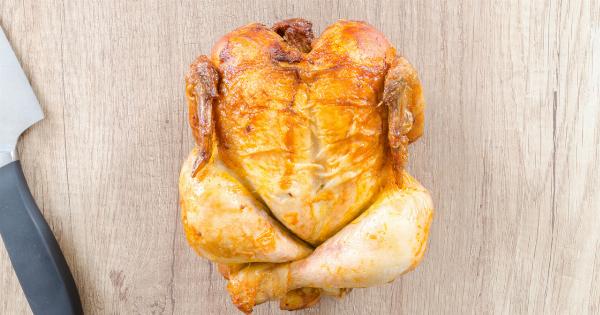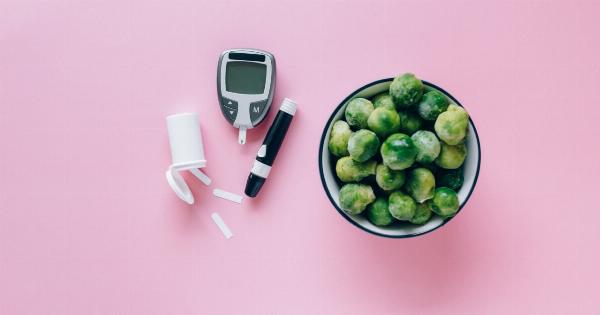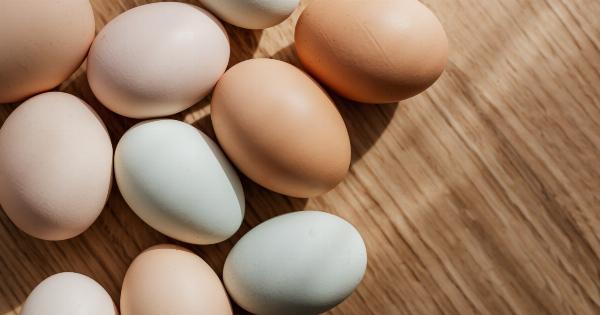Diabetes is a chronic health condition characterized by high blood sugar levels. It affects millions of people worldwide and is associated with various complications such as heart disease, stroke, kidney disease, and nerve damage.
While genetics and lifestyle factors play a role in the development of diabetes, making healthy dietary choices can significantly reduce the risk.
The Importance of Cooking Methods
When it comes to managing diabetes, the cooking methods you use can make a significant difference. Certain cooking techniques can help retain the nutritional value of foods while minimizing the addition of unhealthy fats and excessive sugars.
By choosing the right methods, you can create delicious and healthy meals while reducing the risk of developing diabetes or managing the condition for those already diagnosed. Let’s explore some cooking methods that can help reduce the risk of diabetes:.
1. Steaming
Steaming is a cooking method that involves using steam to cook food. It is a gentle and efficient way of cooking that helps retain the natural flavors, colors, and nutrients of the ingredients.
Steaming vegetables, for example, preserves their fiber content, which is beneficial for managing blood sugar levels. Additionally, steaming requires minimal or no added fats, making it a heart-healthy cooking method.
2. Grilling
Grilling is a popular cooking method that adds a delicious smoky flavor to food. It involves cooking food over direct heat, usually on a grill or barbecue. Grilling allows excess fats to drip away from the food, reducing calorie intake.
When grilling meats, it is important to choose lean cuts and remove visible fat to minimize the intake of unhealthy saturated fats. Grilling vegetables can also enhance their natural sweetness and provide a healthy side dish option.
3. Stir-Frying
Stir-frying is a quick and flavorful cooking method commonly used in Asian cuisine. It involves cooking small pieces of food in a hot pan with a small amount of oil.
This method retains the crunchiness and vibrant colors of vegetables while preserving their nutrients. Stir-frying requires minimal cooking time, which helps to maintain the natural flavors and textures of the ingredients. When stir-frying, opt for healthier oils like olive oil or sesame oil rather than heavy sauces high in sugar and sodium.
4. Baking and Roasting
Baking and roasting are dry heat cooking methods that are excellent for meats, poultry, and vegetables. These methods require little to no added fats, making them a healthier alternative to frying.
When baking or roasting, consider marinating your meats or vegetables using herbs, spices, and citrus juices to add flavor without adding excessive salt or sugar. These cooking methods also help caramelize the natural sugars in foods, enhancing their taste.
5. Poaching
Poaching involves gently cooking food in a liquid, usually water or broth, over low heat. It is an excellent method for cooking delicate foods like fish, eggs, and fruits.
Poaching helps retain the moisture and tenderness of the ingredients without adding unhealthy fats. By poaching fruits instead of using sugary syrups, you can create a nutritious and naturally sweet dessert option.
6. Boiling
Boiling is a simple and straightforward cooking method that involves submerging food in boiling water until it is cooked.
While boiling may cause some loss of nutrients due to leaching into the cooking water, it is still a healthy option as it does not require the addition of extra fats. When boiling vegetables, consider using the cooking liquid as a nutritious base for soups or stews to minimize nutrient loss.
7. Broiling
Broiling is a cooking method that uses direct heat from above to cook food. It is similar to grilling but with the heat source located at the top rather than below. Broiling is a quick method that helps retain the flavors and juices of foods.
When broiling meats, poultry, or fish, it is important to monitor cooking time closely to prevent overcooking and drying out the food. Aim for lean cuts of meat and trim any visible fat before broiling.
8. Sautéing
Sautéing involves cooking food quickly in a hot pan with a small amount of oil or cooking spray. It is a versatile method suitable for a variety of ingredients, including vegetables, meats, and seafood.
Sautéing preserves the natural flavors and textures of the ingredients while requiring minimal oil. Opt for heart-healthy oils like olive oil and use non-stick pans to reduce the amount of added fats.
9. Slow Cooking
Slow cooking, also known as crock-pot cooking, involves cooking food at a low temperature over a long period. This method is ideal for busy individuals as it allows for hands-off cooking and tenderizes tougher cuts of meat.
Slow cooking helps infuse flavors and requires minimal added fats. By using lean meats, plenty of vegetables, and reduced-sodium broths or spices, you can create healthy and comforting meals.
10. Pressure Cooking
Pressure cooking involves cooking food in a sealed pot with water or broth at high pressure and temperatures. This method significantly reduces cooking time and helps retain nutrients in the food.
Pressure cooking is particularly beneficial for legumes and whole grains, which are excellent choices for individuals at risk of diabetes due to their high fiber content and low glycemic index.
Conclusion
The cooking methods we choose can greatly impact our diabetes risk.
By incorporating healthy cooking techniques like steaming, grilling, stir-frying, baking, poaching, and more, we can create delicious and nutrient-dense meals while minimizing the intake of unhealthy fats, sugars, and excessive calories. Remember to choose fresh, whole ingredients and experiment with herbs and spices to enhance flavors without adding excessive salt.
By making mindful choices in the kitchen, we can take a proactive role in reducing our diabetes risk and improving overall health.



























